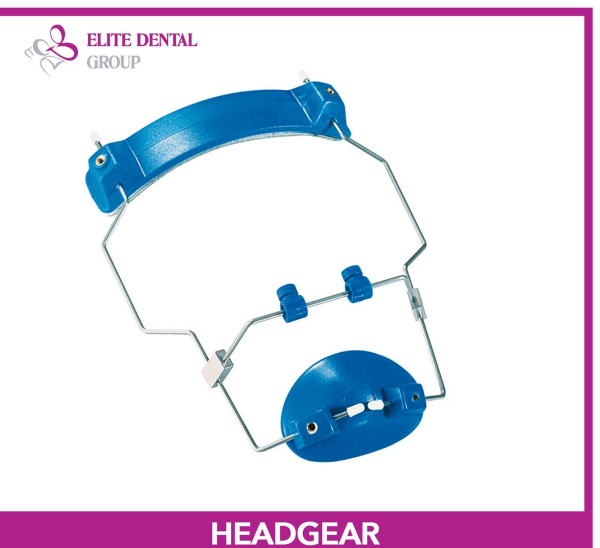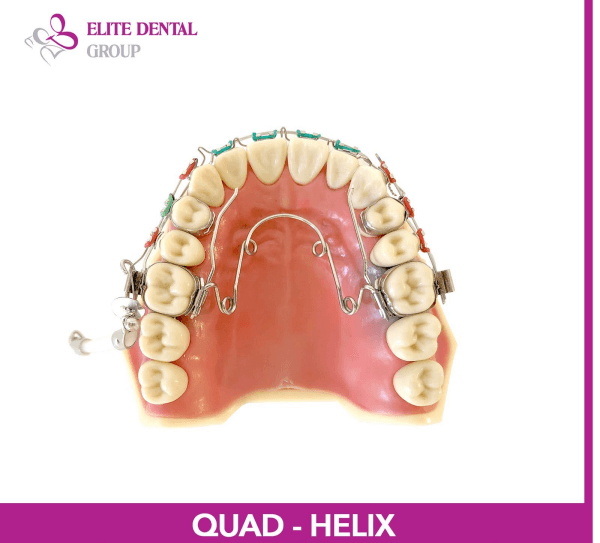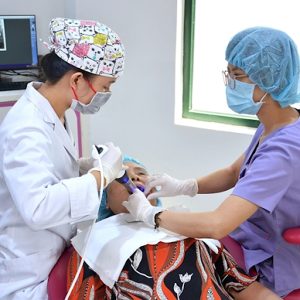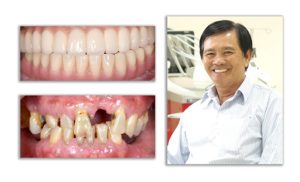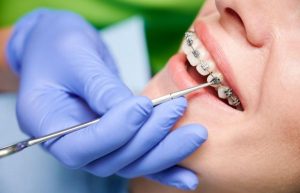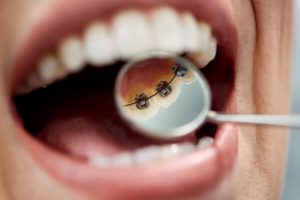Table of content
- 1. The Ideal Age for Orthodontic Intervention and Dental Screening: 5–11 Years
- 2. Should Children Get Braces Early? Four Benefits of Timely Orthodontic Treatment
- 3. Is There an Age Limit for Orthodontic Treatment?
- 4. Exploring Methods and Costs of Children’s Braces by Treatment Stage
- 5. Elite Dental – Leading Orthodontic Center for Children with Specialized Dentists
- 6. How to Care for Your Child’s Teeth After Braces for Long-lasting Results?
Are parents aware of the optimal age for their children to begin orthodontic treatment? The practice of orthodontics has become increasingly widespread, yet not everyone realizes that beginning treatment at the right age can significantly reduce the duration of treatment and yield the best possible results. Therefore, in order to safeguard a healthy, aesthetically pleasing, and enduring smile for their children, parents should regularly monitor and attend to their child’s oral health in a timely and appropriate manner.
1. The Ideal Age for Orthodontic Intervention and Dental Screening: 5–11 Years
According to the American Dental Association (ADA) and orthodontists at Elite Dental, the recommended age for initiating orthodontic evaluations and dental screenings for children is between 5 and 11 years. The reasons for this recommendation are outlined below:
1.1. Jaw Development
The ages of 5 to 11 mark a period of rapid jaw development. Regular dental check-ups during this time are essential, as they allow for the early detection of jaw misalignments in vertical, horizontal (narrow jaw), or anteroposterior dimensions (overbite or underbite). Timely identification of these issues enables orthodontists to implement corrective measures that can comprehensively address any discrepancies, thereby optimizing the child’s smile, ensuring proper tooth alignment, and achieving a healthy bite.
Additionally, during this developmental stage, the jawbone has not yet fully ossified, which facilitates orthodontic interventions aimed at expanding, adjusting, and repositioning the jaw into its correct anatomical alignment. These interventions are made possible through the expertise of the orthodontist and the use of specialized orthodontic appliances.
1.2. Tooth Eruption and Transition
The 5–11-year age range also coincides with the child’s transition from primary to permanent teeth. Parents should closely monitor this process and ensure that their child visits an orthodontist regularly. Based on clinical examinations and diagnostic imaging, such as cephalometric or panoramic X-rays, the orthodontist can assess growth patterns and track the sequence of tooth eruption, providing guidance to ensure that teeth emerge in the correct positions.
In cases where abnormalities are detected—such as overbite, underbite, missing tooth buds, excess spacing between teeth, impacted teeth (e.g., mesiodens), or crowding—the orthodontist will thoroughly explain each situation and recommend the appropriate age and method for orthodontic intervention. This ensures a smooth tooth eruption process and balanced jaw development.
At Elite Dental, children as young as five can begin non-invasive jaw alignment treatments using gentle methods, such as the EF appliance. Parents can be assured that dental screenings and jaw alignment interventions conducted between the ages of 5 and 11 will provide comprehensive orthodontic results, improving both aesthetics and functionality.
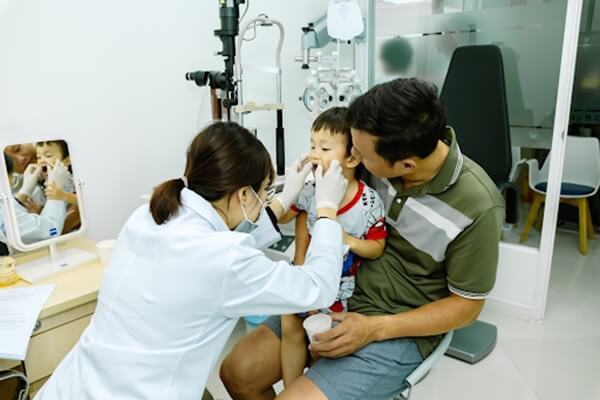
2. Should Children Get Braces Early? Four Benefits of Timely Orthodontic Treatment
Choosing the appropriate age for a child to undergo orthodontic treatment brings numerous benefits, both in terms of professional expertise and the child’s overall quality of life. Specifically:
2.1. Improved Chance of Achieving an Ideal Bite
During the tooth transition phase (between ages 5–11), the jawbone has not yet fully hardened. As a result, any skeletal discrepancies—such as the upper jaw protruding beyond the lower jaw, the lower jaw extending past the upper jaw, a narrow upper jaw, or jaw misalignment causing facial asymmetry or excessive gum exposure when smiling—can be corrected using specialized orthodontic appliances. These interventions help guide the bite into its ideal physiological position, ensuring a balanced and harmonious smile as the child matures.
Many people who’ve undergone orthodontic treatment notice more than just straighter teeth; braces can actually reshape the face, making it appear slimmer and more defined. But is this truly the case? Today, Elite Dental explores this question in depth. 1. Do Braces Change Your Face Shape? Braces work by gently…
2.2. Ample Time for Tooth Adjustment
Is it advisable for children to get braces? The answer is YES, especially when treatment begins at the right time. This allows orthodontists to promptly adjust issues such as protruding jaws, underbites, or crowded teeth, guiding them into their correct positions on the dental arch. Timely intervention increases the likelihood of successful outcomes and minimizes the need for tooth extractions or complex jaw surgeries in adulthood.
2.3. Effective, Long-lasting Results with Minimal Discomfort
Between the ages of 5 and 11, a child’s jawbone is still malleable, allowing orthodontists to easily realign misaligned teeth into their correct physiological bite position. This not only shortens treatment time but also enhances effectiveness, while sparing children the discomfort often experienced by adults undergoing orthodontic treatment. Moreover, when orthodontic treatment is done at the right age and with proper techniques, children are more likely to maintain long-term results, reducing the need for re-treatment in adulthood.
2.4. Reduced Risk of Dental and Digestive Problems
Braces at the right time promote normal jaw and tooth development, reducing the risk of trauma to protruding front teeth. Additionally, well-aligned teeth improve chewing efficiency, enabling children to eat more comfortably and digest food better. Proper alignment also makes dental hygiene easier, helping to prevent dental issues such as cavities and gum disease.
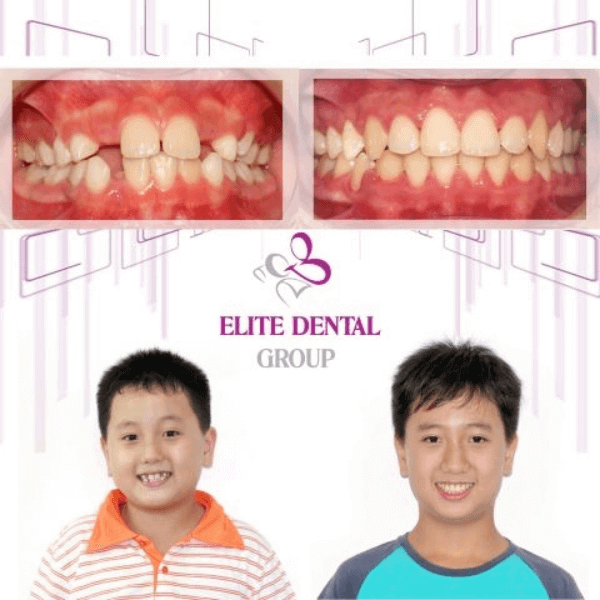
3. Is There an Age Limit for Orthodontic Treatment?
Many people do not fully understand the importance of choosing the right time for braces. Some parents may miss the “golden period” for orthodontic treatment, leading to concerns about whether their child will have the opportunity for braces in the future.
In reality, there is no age limit for orthodontic treatment. People from ages 6 to 50, or even beyond, can still undergo orthodontic correction. However, it is essential for parents to understand that the key to successful orthodontic treatment for children lies in timing.
In a small number of severe cases identified as early as age 5, orthodontists may recommend pre-orthodontic treatment using simple appliances. This helps facilitate smoother transitions during the mixed dentition phase, ensuring better results as permanent teeth begin to emerge.
If orthodontic intervention is delayed until after the age of 12, when permanent teeth have fully erupted, tooth extractions may be necessary to create space for realignment on the dental arch. Furthermore, as children grow older, their jawbones harden, making the treatment process more challenging, complex, time-consuming, and costly. In such cases, orthodontic treatment may only improve the alignment of the teeth, while addressing skeletal discrepancies in the jaw may be difficult to achieve as comprehensively as during the “golden age” of tooth transition.
For this reason, the American Dental Association (ADA) recommends that children start dental screening as early as age 5 to monitor tooth eruption and jaw development. Early detection of bite issues allows for timely intervention during the mixed dentition phase (ages 5–11), ensuring strong, healthy teeth and a naturally aligned smile appropriate for the child’s age.

Differences Between Braces for Children and Adults
The most noticeable difference between braces for children and adults is age. Orthodontic treatment for children is recommended to begin between the ages of 5 and 11, when teeth and jaws are still developing, making adjustments easier. Adults, on the other hand, can begin orthodontic treatment at any age, provided their teeth and gums are healthy enough. However, since an adult’s jawbone has fully developed, the process of realigning teeth may take longer.
4. Exploring Methods and Costs of Children’s Braces by Treatment Stage
Orthodontic treatment for children typically occurs in two stages:
4.1. Jaw Correction Stage
The jaw correction stage lasts between 12 to 24 months. For example, if a 6-year-old child has jaw deformities such as overbite, underbite, or a narrow jaw, the orthodontist may recommend intervention until the child is around 8 years old. This treatment uses specialized appliances like Facemask, Headgear, Quad-Helix, and EF to correct the jaw structure.
These appliances help to adjust the relationship between the upper and lower jaws, bringing them into a balanced, physiological position and preventing future deformities.
After this stage, the orthodontist will regularly monitor the child’s transition from baby teeth to permanent teeth every 3–6 months. This allows early detection of dental issues like impacted teeth, excess teeth, or missing tooth buds, ensuring smooth and healthy tooth development.
Estimated cost: 25,000,000 VND – 60,000,000 VND, depending on the case.
4.2. Comprehensive Orthodontic Stage
Once the child’s permanent teeth have mostly emerged, the orthodontist proceeds with aligning any misaligned teeth, ensuring they are positioned correctly on the dental arch, and achieving a proper bite. This stage typically takes between 18 to 24 months, depending on the child’s current dental condition.
Treatment Options:
- Fixed Braces: This method uses either metal or ceramic brackets combined with specialized archwires that are attached to the teeth. The braces apply consistent pressure to move misaligned teeth into their proper positions and ensure a correct bite.
Cost of fixed braces: 60,000,000 VND – 90,000,000 VND.
- Clear Aligners: This is a modern and highly aesthetic orthodontic method that offers the convenience of being removable for eating and oral hygiene. The treatment involves custom-made, high-quality plastic aligners that are designed based on the child’s dental mold to apply gentle force and guide teeth into their proper alignment.
Cost of clear aligners: 62,500,000 VND – 137,500,000 VND.
It is advisable for parents to take their children to see an orthodontic specialist to assess jaw development, monitor the transition from baby to permanent teeth, and detect any abnormalities early. The orthodontist will recommend appropriate treatment plans based on the child’s individual needs.
5. Elite Dental – Leading Orthodontic Center for Children with Specialized Dentists
With over 10 years of experience in advanced orthodontic treatments and thousands of successful cases, Elite Dental has earned the trust of many parents. Starting your child’s orthodontic journey at Elite Dental ensures peace of mind because:
- Highly Skilled and Child-Friendly Dentists: At Elite Dental, each dentist is an expert in their respective field, having undergone rigorous training and practice in specific areas of dentistry. In addition to their technical expertise, Elite’s dentists are compassionate, understanding, and dedicated to making the treatment process as comfortable and stress-free as possible for children. They take pride in creating healthy, beautiful, and long-lasting smiles for young patients.
- State-of-the-Art Facilities and Modern Equipment: Elite Dental has invested in modern, well-equipped facilities to provide accurate diagnoses and prescribe the most suitable orthodontic appliances. This enables effective treatment and ensures that children leave with the brightest smiles possible.
- Dedicated Play Areas and Child-Specific Treatment Rooms: To make each visit enjoyable, Elite has designed a vibrant play area filled with fun and engaging activities. Additionally, the clinic features private treatment rooms specifically designed for children, ensuring a sterile environment and maximum safety.

- Extensive Database of Successful Pediatric Orthodontic Cases: Over a decade of treatments has given Elite Dental a comprehensive record of thousands of successful pediatric cases. This allows parents to see similar cases to their child’s situation and feel confident about the treatment process. Elite’s orthodontic approach is focused on achieving pain-free, extraction-free treatment with perfectly aligned teeth and balanced facial aesthetics as children grow into adolescence.
Moreover, Elite Dental’s goal is not only to enhance the aesthetics of a child’s smile but also to ensure optimal dental health. This means that post-treatment, the child’s jaw structure will be balanced, properly aligned, and fully functional for natural chewing and biting.
Anh Minh (7 years old) is a prime example of successful orthodontic treatment at the right time. After a thorough examination and a well-structured treatment plan involving two phases—using Lip Bumper, Quad-Helix, and braces—her overbite and lip-biting habits were completely corrected. Today, Ánh Minh enjoys a stable bite and a bright, confident smile. She can also eat her favorite foods without discomfort, thanks to her perfectly aligned teeth.
Another success story involves Mai Phuong, whose parents brought her to Elite Dental at the ideal age for orthodontic intervention. Diagnosed with an overbite requiring early correction, she was fitted with a Headgear appliance. With consistent treatment and diligent follow-up from Elite’s doctors, Mai Phương’s overbite was successfully corrected. Now, she confidently smiles with perfectly aligned teeth.
>> Book a dental consultation for your child at Elite Dental today, and give them the gift of a radiant smile that will boost their confidence and future success!
6. How to Care for Your Child’s Teeth After Braces for Long-lasting Results?
In addition to selecting the right age for braces to achieve optimal results, post-treatment care is also crucial in maintaining the final outcome. To maximize the benefits of orthodontic treatment and minimize negative impacts on dental health, parents should focus on the following:
- Teach Proper Oral Hygiene: Ensure your child brushes their teeth twice a day using circular motions or brushing vertically across all tooth surfaces, from inside to outside. Use fluoride toothpaste to help restore weakened enamel and prevent cavities before they develop. It’s also recommended to use mouthwash after brushing to fully clean away any food particles and plaque in the mouth.
- Build a Healthy Diet: In the initial period after braces removal, it’s best to provide soft, well-cooked foods to avoid putting too much pressure on the teeth, which could cause them to shift. Minimize sugary foods, processed snacks, and highly acidic items to protect the enamel.
- Eliminate Bad Habits: To prevent teeth from shifting back to their original positions, parents should encourage children to break habits like tongue thrusting, teeth grinding, and thumb-sucking.
- Attend Regular Dental Check-ups: Regular check-ups should be maintained according to the dentist’s schedule to monitor overall dental health and detect any abnormal tooth movement.
- Wear Retainers After Braces: To avoid misalignment after braces, children should wear retainers for 24 hours a day for the first three months. After this period, wearing them for 20 hours daily will be sufficient.
In conclusion, the ideal age for braces is between 5 and 11 years old. During this stage, parents should closely monitor their child’s tooth replacement process. If any issues like overbites, underbites, or crooked teeth are detected, bring your child to Elite Dental for a clinical examination and the opportunity to experience timely orthodontic care—correct bite alignment and beautifully straight teeth, all provided by Vietnam’s leading orthodontic experts!




